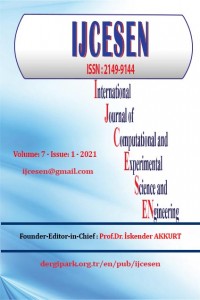Öz
Background: Occupational lead poisoning is a common and serious occupational health problem, with workers mainly exposed to lead through inhalation and ingestion. A wide range of studies conducted on lead intoxication and its ECG effects, revealed that QT interval is one of the most important parameters. QT dispersion is a marker of heterogeneity and is frequently encountered in patients with a disparity in ventricular recovery and is implicated as a direct marker of cardiovascular mortality.
Methods: Battery, metal mine and car service workers who had been working in the same workplace for at least two years and admitted to Ankara Occupational Diseases Hospital for annual examination and hospitalized with toxic blood lead levels, were enrolled in the study. Patients were given chelation therapy with Ca-EDTA, and ECGs were taken before hospitalization and one week after the chelation therapy.
Results: A total of 155 male Caucasian workers (mean age = 32 ± 12 years) were evaluated. The mean blood lead level was 55.3 ± 5.1 μg/dL (min = 45.3 μg/dL max = 70.9 μg/dL). None of the participants had an arrhythmic event or death. QT dispersion before chelation and post-therapy was 38.86±13.24 msec and 35.80±12.32 msec, respectively (p=0.000001).
Conclusion: Chelation therapy by Ca-EDTA in lead poisoning could reduce ventricular arrhythmias by homogenizing ventricular repolarization times.
Anahtar Kelimeler
Kaynakça
- Referans1 Pala, K., Turkkan, A., Gucer, S., Osman, E., & Aytekin, H. (2009). Occupational lead exposure: blood lead levels of apprentices in Bursa, Turkey. Industrial health, 47(1), 97-102. https://doi.org/10.2486/indhealth.47.97
- Referans2 Poręba, R., Gać, P., Poręba, M., & Andrzejak, R. (2011). Environmental and occupational exposure to lead as a potential risk factor for cardiovascular disease. Environmental toxicology and pharmacology, 31(2), 267-277. https://doi.org/10.1016/j.etap.2010.12.002
- Referans3 Bühler, F. R., Bertel, O., & Kiowski, D. W. (1978). Plasma noradrenaline and adrenaline and β-adrenoreceptor responsiveness in renin subgroups of essential hypertension. Clinical Science and Molecular Medicine, 55(s4), 57s-60s. https://doi.org/10.1042/cs055057s
Öz
Destekleyen Kurum
Destekleyen kurum yoktur.
Kaynakça
- Referans1 Pala, K., Turkkan, A., Gucer, S., Osman, E., & Aytekin, H. (2009). Occupational lead exposure: blood lead levels of apprentices in Bursa, Turkey. Industrial health, 47(1), 97-102. https://doi.org/10.2486/indhealth.47.97
- Referans2 Poręba, R., Gać, P., Poręba, M., & Andrzejak, R. (2011). Environmental and occupational exposure to lead as a potential risk factor for cardiovascular disease. Environmental toxicology and pharmacology, 31(2), 267-277. https://doi.org/10.1016/j.etap.2010.12.002
- Referans3 Bühler, F. R., Bertel, O., & Kiowski, D. W. (1978). Plasma noradrenaline and adrenaline and β-adrenoreceptor responsiveness in renin subgroups of essential hypertension. Clinical Science and Molecular Medicine, 55(s4), 57s-60s. https://doi.org/10.1042/cs055057s
Ayrıntılar
| Birincil Dil | İngilizce |
|---|---|
| Konular | Klinik Tıp Bilimleri |
| Bölüm | Case Report |
| Yazarlar | |
| Yayımlanma Tarihi | 31 Mart 2021 |
| Gönderilme Tarihi | 18 Kasım 2020 |
| Kabul Tarihi | 31 Mart 2021 |
| Yayımlandığı Sayı | Yıl 2021 Cilt: 7 Sayı: 1 |


